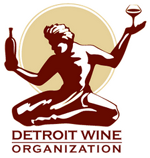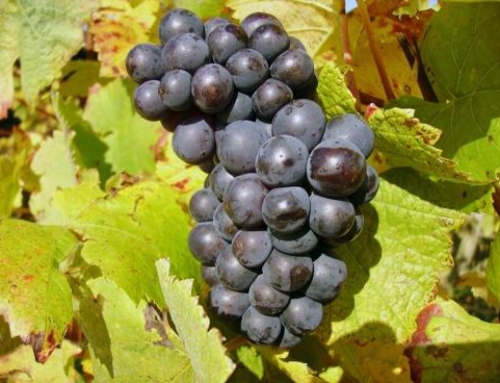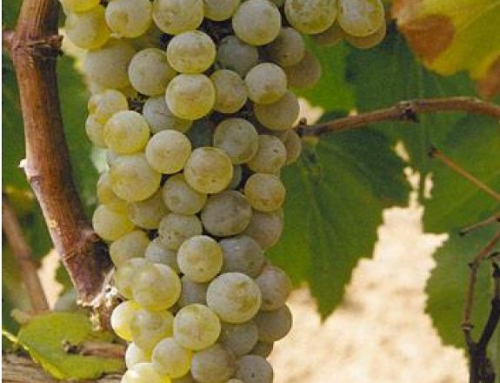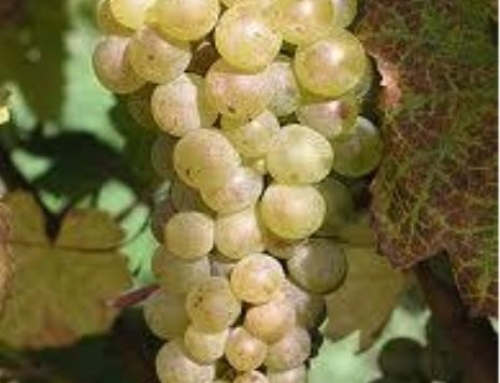We looked at the various regions of Italy in part one of this course, so now lets get to the heart of the matter: the Italian wines for your tasting pleasure!
Some well known Italian wines
Barolo (bah-roh-loh) One of the top Italian wines. Made from the Nebbiolo grape in the Piedmont. It is often long lived and heavy when young.
Brachetto (bra-keh-toe) A slightly sweet and sparkling red wine from the Piedmont region of Italy. This is my vote for the best pizza wine.
Chianti (kyahn-tee) One of the most famous of the Italian red wines. Made from the Sangiovese grape, although a small amount of the white grapes, Trebbiano or Malvasia, may be added for finesse. The Chianti region encompasses much of the hills of Tuscany with the higher quality Chianti Classico region being a smaller and more defined classic region for producing the wine. In times gone past, Chianti was often sold in a straw covered bottle called a fiasco. This has mostly given way to modern bottles.
Dolcetto (dohl-chet-oh) One of the principal grapes of Northwestern Italy. The best known wines made from this variety bear its name.
Est! Est! Est!!! Other than the name, this is a rather forgetable Italian white wine. The name is an example of marketing that has withstood the ages. The story goes that a German Bishop in the 1100s sent a servant ahead to Rome with instructions to chalk Est (it is in Latin) on the side of every tavern with decent wine between the Bishop’s home and Rome. That way the Bishop would not have to suffer through poor wine on his trip to visit the Pope. In the town of Montefiacone the servant was so enamoured of the wine that he scrawled the now famous epitaph. The Bishop, upon arriving in the town, was said to have agreed with his servant’s taste to such an extent, that the Bishop never ventured on, living out his life drinking the wine he loved. Perhaps it was a different wine than what is sold today.
Gavi (gah-vee) One of Italy’s best known white wines. Made from the Cortese grape around the town of Gavi, in the northwestern part of the country, the Piedmont.
Lambrusco (lam-broos-coh) A lightly sparkling wine, made from the grape of the same name. It is from the Emilia-Romagna region of Italy. Produced both in a dry or slightly sweet style, it is best know in the US as the brand Riunite (which is one of the sweetest examples made). In Italy, it is easier to find the drier styles, and they are a great match for the rich foods of the region. Lambrusco is made just west of Bologna, which is considered to be the capital of Italian gastronomy.
Marsala (mar-sah-lah) Often relegated to the kitchen, this is the best known fortified wine of Sicily, Italy. While still popular as a cooking ingredient, it is not usually a favorite among lovers of fortified wines. The wine itself is vinified dry, and a sweeting agent mosto cotto (cooked must) is added to give it the distinctive brown color and flavor.
Moscato d’Asti (moss-cah-to dahss-tee) One of my favorite wines, it is often overlooked in the US. Lightly sparkling, lightly sweet, and light in alcohol, this wine is light in everything, except flavor. Made from the Muscat (Moscatoh) grape in the town of Asti, in the Piedmont region of northern Italy. Only the finest grapes go into the production of Moscato d’Asti, with the bulk of them being utilized to make the better known, and fully sparkling, Asti Spumante.
Orvieto (ohr-vyay-toh) A well known Italian white wine made from the Trebbianno grape in the Umbria region.
Prosecco (pro-seh-coh) A white wine grape of Italy. In the US it is best known as a sparkling wine made from the same grape. In Italy the wine may be sparkling, lightly sparkling, or even still.
Rosso di Montalcino (ross-oh dee mon-tahl-tchee-noh) The lighter version of the Italian wine Brunello di Montalcino, made from the same grapes, in the same vineyards, but without oak (or in fact any) aging.
Sassicaia (sah-see-cah-yah) A Cabernet Sauvignon based red wine from the coast of the Tuscany region in Italy. The wine is very consciously based on the wines of the Haut-Medoc in Bordeaux, France, and indeed even the grape cuttings originate from there. This wine forever changed the landscape of Italian wines. Even though it had no official classification, it was one of the most expensive and critically acclaimed wines of Italy. It was at the forefront of a class of wines that have been called Super Tuscans each based on Cabernet Sauvignon, even though, at the time, Cab was not an allowed grape anywhere in the Tuscany region. Because of the great popularity of these wines a new DOC designation was created in the region of Bolgheri for these wines, and a DOC Bolgheri Sassicaia was created for this wine alone. So popular is this wine, that counterfeiting has recently become a problem.
Soave (swah-veh) The best known Italian white wine, it comes from the Verona region in the northeastern portion of the country. Made from the Garganega grape, with the ubiquitous Trebbiano sometimes used in the blend. Most Soave is uninspiring, made to fill the world wide demand for the name, with little regard to quality. There are exceptions among the smaller producers who struggle to provide a wine of interest for the discriminating consumer. Soave Classico comes from the smaller, more defined, and original, Soave region.
Tignanello (tee-nya-nell-oh) An Italian wine made in the Chianti region by the well known Antinori firm. Since its inception in 1971, this wine has broken tradition with the Chianti region and produced a wine of character that does not follow the rules. The wine tends to be mostly Sangiovese, as is Chianti, but without the white wine in the blend that softens Chianti. The addition of Cabernet Sauvignon takes this wine even further from its Chianti roots.
Valpolicella (vahl-poh-lee-tchell-ah) One of the best known red wines of Italy. The name which means valley of many cellars is a testament to the region, north of Verona where it is made. When the vintage permits, a portion of the grapes are brought from the vineyard to be dried on straw mats. The sweet version of the wine, which is hard to find in the US is called Recioto della Valpolicella and the better known dry version is Recioto della Valpolicella Amarone, or simply Amarone.
Verdicchio (vair-deek-ee-oh) An Italian white wine made from the grape of the same in the Marche region. There are several versions made, but the best known in the US comes in a curved bottle, reminiscent of the clay amphora that stored wine in ancient times.
Verduzzo (vair-doot-soh) An Italian white wine and grape. Many of the best examples are somewhat sweet.
Vernaccia di San Gimignano (vair-nah-tchah dee san-jee-mee-nyah-noh) A well known Italian dry white wine and grape. San Gimignano itself is a quaint tourist town, not far from Florence. It is famous for its towers, and visitors often come home with a taste for the local wine.
Vin Santo (veen sahn-toe) An Italian white wine from the Tuscany region. Made from Trebbiano and Malvasia grapes that have been dried before making the wine. The very sweet grapes are then fermented in small barrels that have some air in them, allowing the wine to maderize (oxidize). The result is a slightly brown wine that is either sweet, or very dry and alcoholic.
Vino Nobile di Montepulciano (veen-no noh-bee-leh dee mon-teh-pool-tcha-noh) An Italian red wine from the Tuscany region. Made from the Sangiovese grape in and around the town of Montepulciano. The region neighbors the southern Chianti area, and many examples are similar in style to Chianti.
Terms you may find on Italian Wine Labels
Denominazione do Origine Controllata (deh-noh-mee-nah-tzee-oh-neh dee oh-ree-jeen-eh con-troh-lah-tah) The Italian term for their appellation laws, established in 1963. Abbreviated DOC.
Denominazione do Origine Controllata e Garantita (deh-noh-mee-nah-tzee-oh-neh dee oh-ree-jeen-eh con-troh-lah-tah eh gah-rahn-tee-tah) The highest level of the Italian DOC laws. The wines must not only be typical of their region, but must pass a blind tasting. The first wines that began using this designation went on sale in the mid 1980s. Abbreviated DOCG.
Imbottigliato (im-boh-tee-lyah-toe) Italian for bottled. Imbottigliato al origine is the term for estate bottled.
Indicazione Geographica Tipica (in-dee-katz-ee-oe-nee jee-oe-graf-ee-ca tee-pee-cah) A relatively new quality designation for Italian wines. It is used for wines that are typical of what is being made in the region, but may not be made with the official grapes or in a traditional style. Many of these wines are simple, but some are the most expensive wines in Italy. Usually abbreviated to IGT.
Liquoroso (lee-kwoh-roh-soh) An Italian term for a dessert wine that is made sweet by adding spirits to stop the fermentation process while there is still sugar left unfermented. The English term is Fortified Wine.
Riserva (ree-zair-vah) In Italian wine laws this term can only be used for wines that have been aged for a period before release. The length of time varies by region. It is three years for Chianti Riserva, but five for Barolo or Brunello Riserva. Unlike the similar Spanish term, Italian wines do not necessarily have to be aged in barrel to qualify for Riserva.
Rosso (rossâ-oh) Italian for red and used as part of the name for some red Italian wines.
Secco (seck-oh) The Italian term for dry (meaning a wine without any residual sugar).
Tenuta (teh-new-ta) A holding or estate. Similar to the word Chateau in French.
Vino (veen-noh) Italian for wine.
Vino da Tavola (vee-no dah tah-voh-lah) The Italian term for table wine. As with other European countries, this is the lowest designation for wines. Since some of Italy’s greatest wines are made in a style or grape variety inconsistent with their regions, this lowly designation has appeared on the label of some of the most popular and expensive Italian wines. To help reduce confusion, Italy created a new designation for the best of these wines called Indicazione Geographica Tipica.





Leave A Comment